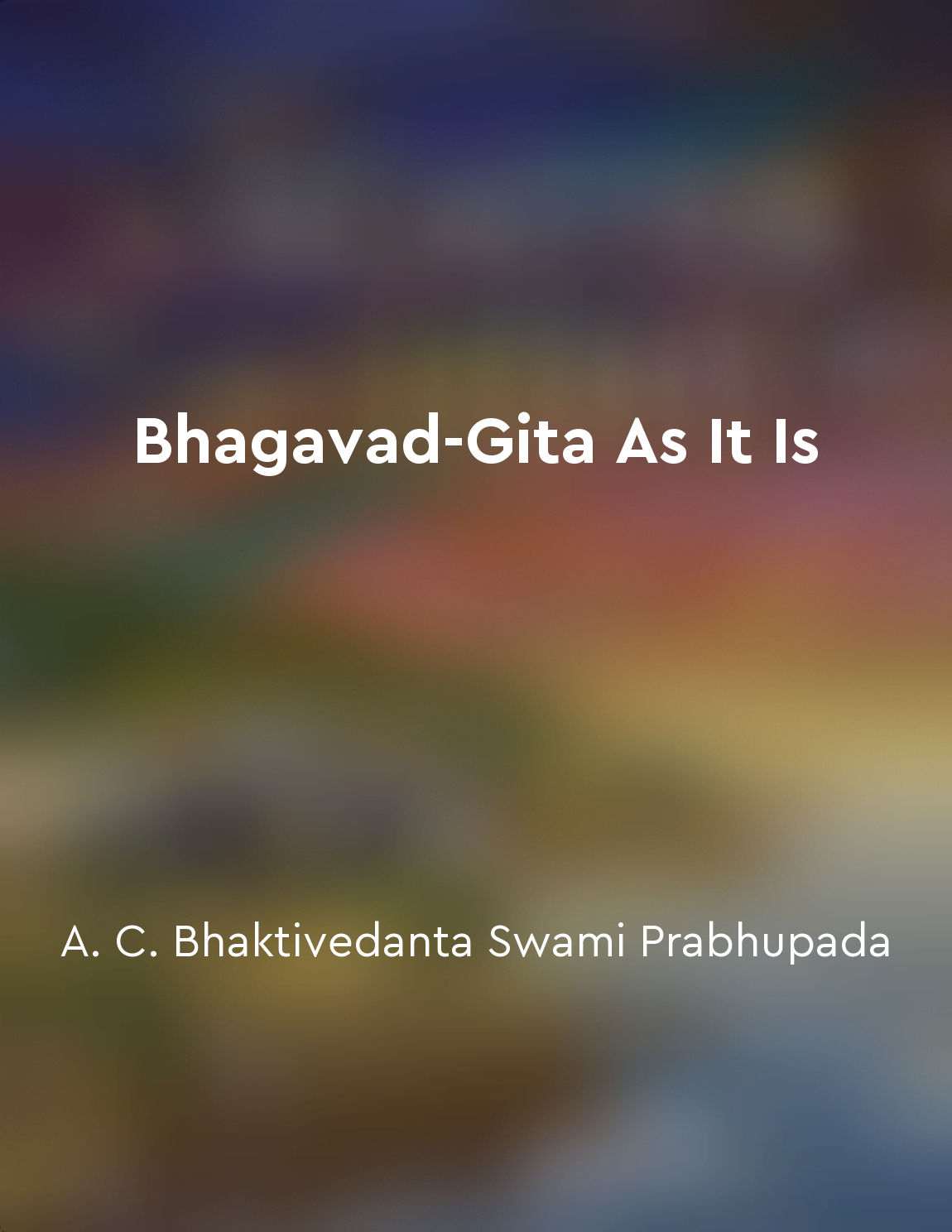Arjuna's confusion on battlefield from "summary" of Bhagavad-Gita As It Is by A. C. Bhaktivedanta Swami Prabhupada
The scene was set on the battlefield of Kurukshetra, where two armies were ready to clash in a great war. Arjuna, a mighty warrior and a key figure in the battle, found himself in a state of confusion and moral dilemma. As he surveyed the opposing forces, he was overwhelmed by the sight of his own kinsmen, teachers, and friends standing on the other side, ready to fight against him. Arjuna was torn between his duty as a warrior to fight for righteousness and his love for his family and friends. He was filled with doubt and sorrow, unsure of what course of action to take. In his distress, he turned to his charioteer, Lord Krishna, for guidance. Krishna, who was not only Arjuna's charioteer but also his friend and divine guide, recognized the turmoil in Arjuna's heart and began to impart his wisdom. He explained to Arjuna the eternal nature of the soul, the principles of duty and righteousness, and the concept of selfless action. Krishna urged Arjuna to rise above his attachment to the material world and to fulfill his duty as a warrior without being swayed by his emotions. He reminded Arjuna of his divine purpose and the importance of following one's dharma, or righteous path, without attachment to the fruits of one's actions. Through his teachings, Krishna helped Arjuna to see the bigger picture and to understand the true nature of reality. He showed Arjuna that the soul is eternal and indestructible, and that death is merely a transition from one body to another. He encouraged Arjuna to fight for justice and righteousness, without being driven by personal desires or attachments. Arjuna's confusion on the battlefield was transformed into clarity and determination as he embraced Krishna's teachings and prepared to fulfill his duty as a warrior. Krishna's words resonated with Arjuna, guiding him towards a path of selflessness, devotion, and enlightenment.Similar Posts
Vinamrata aur sahanubhuti ka khayal rakhein
Prabhu Shri Krishna ne Arjun se Vinamrata aur sahanubhuti ka khayal rakhne ki salah di hai. Iska arth hai ki humein dusron ke p...

The distinction between the body and the soul
The body is mortal, the soul is immortal. The body is subject to birth, growth, decay and death, but the soul is eternal. The b...
True wisdom arises from direct experience rather than mere knowledge
Wisdom transcends the accumulation of facts; it is birthed from the depths of personal experience. Knowledge can fill libraries...
भगवान केवल शुद्ध कर्म करने की ही मांग करते हैं।
भगवान केवल शुद्ध कर्म करने की ही मांग करते हैं। भगवान को भले ही हर किसी का समर्थन हो, लेकिन उन्हें शुद्ध कर्म करने की मांग है। ...
The nature of the self
The self is the essence of who we are, beyond the physical body and the mind. It is our true nature, our innermost being that i...

The power of positive thinking
In the Bhagavad Gita, it is emphasized that the mind is a powerful tool that can greatly influence our thoughts, actions, and u...
Cultivate love and devotion for spiritual awakening
To attain spiritual awakening, it is essential to cultivate love and devotion within oneself. Love and devotion are like the fu...

Letting go of attachments
The concept of letting go of attachments is a central teaching in the Bhagavad Gita. This spiritual text emphasizes the importa...
The Indus Valley Civilization was one of the earliest urban societies
The Indus Valley Civilization is often regarded as one of the earliest urban societies in the history of India. This ancient ci...

